Related Research Articles

Morganatic marriage, sometimes called a left-handed marriage, is a marriage between people of unequal social rank, which in the context of royalty or other inherited title prevents the principal's position or privileges being passed to the spouse, or any children born of the marriage. The concept is most prevalent in German-speaking territories and countries most influenced by the customs of the German-speaking realms.
A queen consort is the wife of a reigning king, and usually shares her spouse's social rank and status. She holds the feminine equivalent of the king's monarchical titles and may be crowned and anointed, but historically she does not formally share the king's political and military powers, unless on occasion acting as regent.
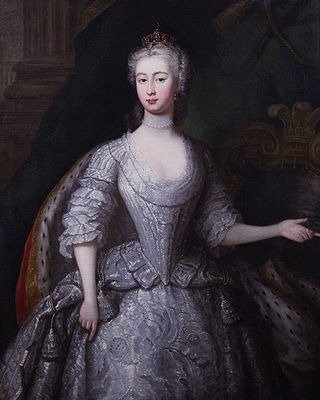
Princess Augusta of Saxe-Gotha-Altenburg was Princess of Wales by marriage to Frederick, Prince of Wales, eldest son and heir apparent of King George II. She never became queen consort, as Frederick predeceased his father in 1751. Augusta's eldest son succeeded her father-in-law as George III in 1760. After her spouse died, Augusta was the presumptive regent of Great Britain in the event of a regency, until her son reached majority in 1756.

Victoria, Princess Royal was German Empress and Queen of Prussia as the wife of German Emperor Frederick III. She was the eldest child of Queen Victoria of the United Kingdom and Prince Albert of Saxe-Coburg and Gotha, and was created Princess Royal in 1841. As the eldest child of Queen Victoria, she was briefly her heir, until the birth of her younger brother and future King, Edward VII. She was the mother of Wilhelm II, German Emperor.
Regnal numbers are ordinal numbers used to distinguish among persons with the same name who held the same office. Most importantly, they are used to distinguish monarchs. An ordinal is the number placed after a monarch's regnal name to differentiate between a number of kings, queens or princes reigning the same territory with the same regnal name.
Royal Highness is a style used to address or refer to some members of royal families, usually princes or princesses. Kings and their female consorts, as well as queens regnant, are usually styled Majesty.
House laws are rules that govern a royal family or dynasty in matters of eligibility for succession to a throne, membership in a dynasty, exercise of a regency, or entitlement to dynastic rank, titles and styles. Prevalent in European monarchies during the nineteenth century, few countries have house laws any longer, so that they are, as a category of law, of more historical than current significance. If applied today, house laws are mostly upheld by members of royal and princely families as a matter of tradition.

Princess Amelia Sophia Eleonore of Great Britain was the second daughter of King George II of Great Britain and Queen Caroline. Born in Hanover she moved to England when her grandfather, George I became king. Amelia lived a solitary existence and died in 1786 and was the last surviving child of her parents.
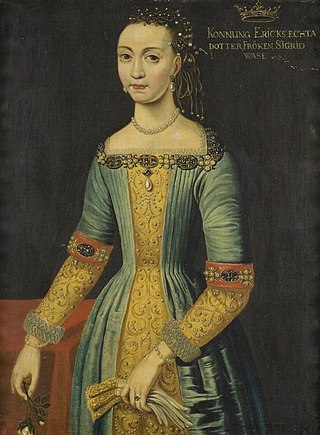
Princess is a title used by a female member of a monarch's family or by a female ruler. The male equivalent is a prince. Most often, the term has been used for the consort of a prince, or for the daughter of a monarch. A crown princess can be the heir apparent to the throne or the heir apparent's spouse.

The Danish royal family is the dynastic family of the monarch. All members of the Danish royal family except Queen Margrethe II hold the title of Prince/Princess of Denmark Or Count/Countess of Monpezat. Children of the monarch and of the heir apparent are accorded the style of His/Her Royal Highness, while other members of the dynasty are addressed as His/Her Highness. The Queen is styled Her Majesty.

The Order of the Black Eagle was the highest order of chivalry in the Kingdom of Prussia. The order was founded on 17 January 1701 by Elector Friedrich III of Brandenburg. In his Dutch exile after World War I, deposed Emperor Wilhelm II continued to award the order to his family. He made his second wife, Princess Hermine Reuss of Greiz, a Lady in the Order of the Black Eagle.
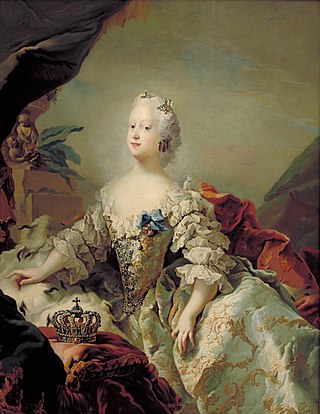
Louise of Great Britain was Queen of Denmark and Norway from 1746 until her death, as the first wife of King Frederick V. She was the youngest surviving daughter of King George II of Great Britain and Caroline of Ansbach.

Charles II was ruler of the state of Mecklenburg-Strelitz from 1794 until his death. Originally ruling as duke, he was raised to the rank of grand duke in 1815. Prior to succeeding to the throne, he served as Governor of Hanover from 1776 to 1786.

Royal intermarriage is the practice of members of ruling dynasties marrying into other reigning families. It was more commonly done in the past as part of strategic diplomacy for national interest. Although sometimes enforced by legal requirement on persons of royal birth, more often it has been a matter of political policy or tradition in monarchies.
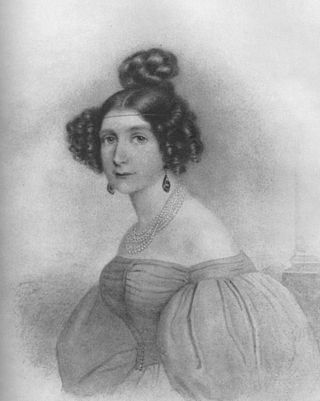
Princess Elisa Radziwiłł was a member of Polish nobility, of royal ancestry. She was the desired bride of Prince William of Prussia, who later became William I, German Emperor, but they were not allowed to marry.
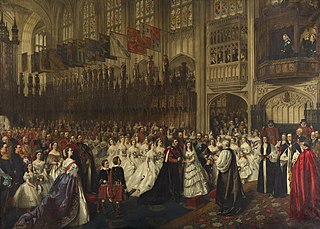
The royal descendants of Queen Victoria and of King Christian IX, monarchs of the United Kingdom (1837–1901) and Denmark (1863–1906) respectively, currently occupy the thrones of Belgium, Denmark, Luxembourg, Norway, Spain, Sweden, and the United Kingdom. At the outbreak of the First World War, their grandchildren occupied the thrones of Denmark, Greece, Norway, Germany, Romania, Russia, Spain, and the United Kingdom. For this, Victoria was nicknamed the "grandmother of Europe" and Christian IX the "father-in-law of Europe".
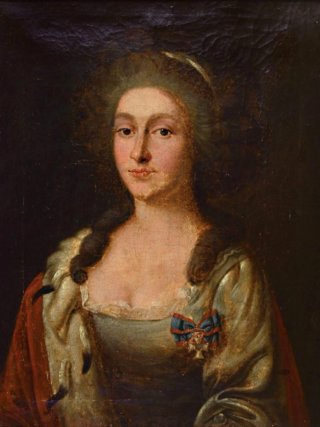
Princess Friederike Caroline Luise of Hesse-Darmstadt was a member of the House of Hesse and by marriage a Duchess of Mecklenburg-Strelitz.
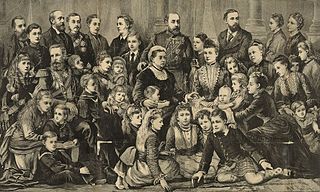
Queen Victoria, the British monarch from 1837 to 1901, and Prince Albert had 9 children, 42 grandchildren, and 87 great-grandchildren.

The monarchy of Denmark is a constitutional institution and a historic office of the Kingdom of Denmark. The Kingdom includes Denmark proper and the autonomous territories of the Faroe Islands and Greenland. The Kingdom of Denmark was already consolidated in the 8th century, whose rulers are consistently referred to in Frankish sources as "kings". Under the rule of King Gudfred in 804 the Kingdom may have included all the major provinces of medieval Denmark.